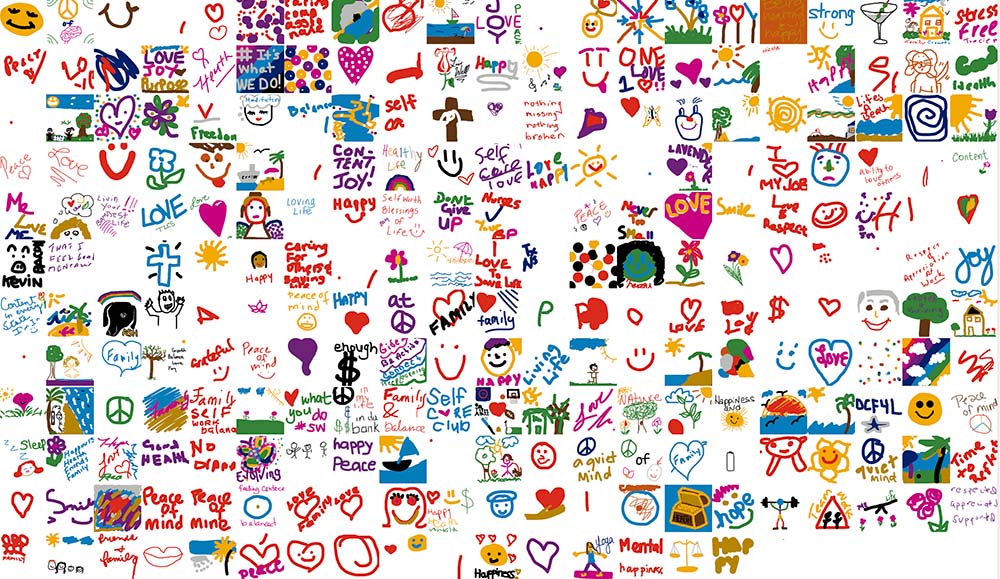
Participants of an Emory University Hospital workshop drew these images in response to the question, “What does well-being mean to you?” using the Piccles platform. “The drawings are great,” Piccles founder Chris Bent has said, “but the stories are gold.”
Chris Bent has never needed convincing that drawing makes people feel better — his own experience showed him that it’s true. In 2016, the Montreal-based entrepreneur created Piccles, an interactive online platform where users create and share computer-generated drawings, as an outlet for his own creativity. “Drawing,” Bent recently wrote in a LinkedIn post, “has been making people feel good for thousands of years. It reduces stress, improves happiness, drives innovation, and helps manage emotions.”
But in a world that is dominated by logic and analytics, “it also helps,” Bent added, “to use modern technology to validate our ancient intuitions.” And that’s exactly what happened when RE-AK Technologies, also based in Montreal, applied its technology to measure the emotional and cognitive engagement of participants during a two-hour-long online session for event professionals held in April 2021. RE-AK, which is part of the Palais de congrès de Montréal Event Lab innovation incubator, uses AI and biometrics to measure human emotions in a variety of settings, including in-person and hybrid meetings and trade shows. The session was part of a course on transforming events organized by the Palais de congrès de Montréal.
In this case, RE-AK analyzed data using changes in participants’ facial expressions and eye movement, said RE-AK CEO Frédéric Simard. The event kicked off with a short icebreaker using the Piccles platform, which, once the data was crunched, stood out as the session that generated the greatest amount of happiness during the entire event, Simard said. In addition to registering a huge spike in joy, RE-AK also charted a significant decrease in the mental effort demanded of participants as they drew.
Other studies have confirmed the connection between drawing and increased happiness and decreased stress. In research carried out by faculty and students at the College of Nursing and Health Professions at Drexel University in 2015, a majority of study participants who drew with markers, painted, or worked with clay had lowered levels of cortisol in their saliva afterwards, which indicated lowered stress. Participants also reported feelings of relaxation and reduced stress, benefits that were present regardless of their prior art experience or skill level.
The content of participants’ drawings also has a story to tell, one that’s different than traditional survey methods, Bent told Convene. “People don’t know how to put a veil over the truth of what they really feel when they draw.”
Including, apparently, how happy it makes them.
Barbara Palmer is deputy editor at Convene.
Visit the Archive
Read past installments of Meetings and Your Brain.
